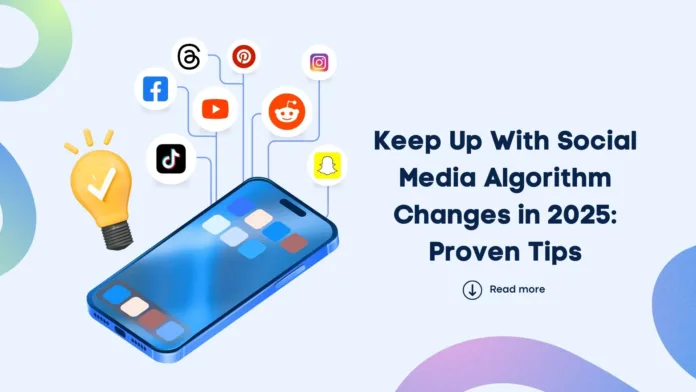You open your phone for just a few minutes… and before you know it, an hour has passed.
That’s no accident.
In 2025, social media algorithms have become incredibly advanced. They know exactly how to keep your attention, what content you’ll engage with, and how to make you come back — again and again. These algorithms are no longer just showing you posts in chronological order. They’re using machine learning, emotion detection, and predictive behavior models to fine-tune your experience to perfection.
Let’s explore the hidden techniques that social media algorithms 2025 are using — and why understanding them is key to taking back control of your digital life.
🤖 Section 1: The Evolution of Social Media Algorithms
In the early days of Facebook or Twitter, feeds were simple. You saw posts from friends in the order they were shared. But today’s algorithms are far more complex.
By 2025, these platforms don’t just respond to what you like — they predict what you’ll like before you even scroll.
Here’s what’s changed:
AI-driven content scoring: Algorithms now score every post on how likely you are to engage with it — not just based on likes, but on behavior you don’t notice.
Real-time adaptation: Your feed updates in real-time based on your scrolling speed, hesitation, facial expressions (on some apps), and screen taps.
Platform loyalty optimization: The longer you stay, the more profitable you are. So the algorithm constantly tests new ways to keep you addicted.
In short, social media algorithms 2025 are designed to be invisible manipulators — feeding you what you want, when you want it, and sometimes before you even know you want it.
🎯 Section 2: Hidden Tricks Algorithms Use to Hook You
Let’s dive into some specific tactics these algorithms use to keep users glued to their screens:
1. Variable Reward Systems
Much like slot machines, social platforms offer unpredictable rewards. One scroll might be boring — the next might be amazing. This taps into your brain’s dopamine system, creating addiction-like loops.
2. Micro-Tracking
Platforms track:
How long you linger on a post
If you pause on a comment
What part of a video you rewatch
Even how you hold your phone
These micro-signals help the algorithm fine-tune what to serve you next.
3. Emotional Targeting
Using AI tools, platforms now categorize posts based on emotional impact. Sad, shocking, or funny content is prioritized — because emotional responses increase engagement.
By 2025, some apps even use facial recognition to test how you react to certain videos — and then show you more of what sparks emotion.
4. Content Loops and Auto-Play
Ever noticed how short-form content (like TikToks or Reels) plays one after the other… automatically? That’s intentional. By removing friction, algorithms reduce the chance you’ll leave.
Auto-play is one of the most effective tricks to increase watch time — and it’s become a default setting across nearly all platforms in 2025.
5. Hyper-Personalization
Each user’s feed is completely unique. What you see is based on:
Your past engagement
What people like you watch
What’s trending in your city
And even what time of day you’re scrolling
This makes it almost impossible to quit — because your feed feels tailor-made just for you.
🧠 Section 3: The Impact on Attention and Mental Health
Now that social media algorithms 2025 have become so sophisticated, researchers are raising concerns about their long-term effects.
Here are some of the most common consequences:
Reduced attention span: Quick-hit content trains the brain to expect constant stimulation.
Addiction patterns: Dopamine loops make users crave the next “hit” of content.
Comparison & anxiety: Hyper-curated feeds create unrealistic standards of beauty, success, and lifestyle.
Misinformation spread: Emotional content (even if false) is prioritized because it boosts engagement.
Social media is no longer just about staying connected. It’s about staying online.
🔓 Section 4: How to Outsmart the Algorithm
You don’t have to delete all your apps — but you can take back control.
5 practical tips to reduce algorithm influence:
Turn off autoplay where possible.
Follow accounts intentionally, not just based on suggestions.
Use platforms with chronological feeds, or switch to that mode if offered.
Limit app permissions (like location, microphone, and camera access).
Set time limits or schedule “no-screen” hours each day.
Being mindful about how and why you use social media can reduce its psychological grip — without cutting you off entirely.
📌 Conclusion: Awareness Is Your First Defense
In 2025, social media algorithms aren’t just tools — they’re behavior shapers. They nudge your actions, influence your thoughts, and dictate how you spend your time.
But now that you understand the hidden tricks behind them, you’re one step ahead.
The next time you’re scrolling endlessly through your feed, ask yourself:
Is this really what I wanted to see… or what the algorithm wanted me to see?
Stay informed. Stay in control.
